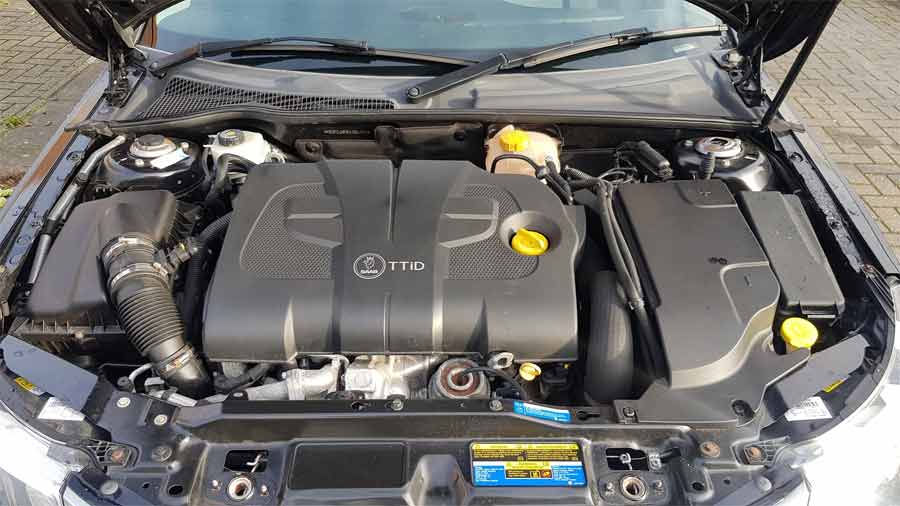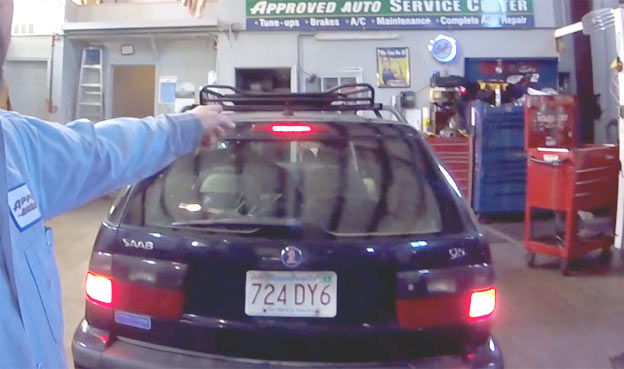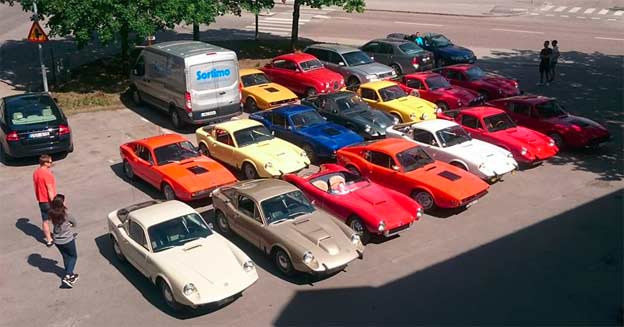Back in 2007, Saab announced major changes to the Saab 9-3 model, and among the many, the design of the front end (all new to the A-pillars), the AWD variant (XWD and Turbo X), but also two new powertrains from 2008 stood out. These were petrol bio-ethanol 2.0t and bigger news – a two-stage turbo 1.9-litre TTiD.
Saab 9-3 TTiD is an environmentally friendly diesel car that achieves low consumption without sacrificing anything of performance or driveability. Those who had the opportunity to drive this car, said that although it is an atypical (diesel) Saab – The feeling is very much Saab, even though the classic petrol turbo has been replaced by a diesel engine from Fiat. The torque is powerful (400Nm–180hp) and the acceleration is almost stunning. The same kind of diesel engine, but with a different setup, it is in two more cars, namely the Lancia Delta III and the Cadillac BLS (a car based on the Saab 9-3 platform).
At highway speeds, the Saab 9-3 TTiD runs extremely relaxed. On small and crooked roads, Saab also gets a chance to show off its fine driving characteristics. The car goes easily and willingly where the driver steers, neither more nor less.
The diesel engine is revving and can be driven really sporty for those who so wish. The only thing that does not work is to do a classic Saab-way overtaking in the highest gear (we emphasize – the highest gear) from 70 km/h by just stepping on the gas at the bottom. The gear ratio of Saab’s eco-friendly 119-gram version of 9-3 is so high that the car is barely drivable in 6 gear at 80km/h. But on the other hand, in 3 third gear – the car breaks the asphalt.
Table of Contents
How the ecological TTiD engine came about
At the time of the 2003 9-3 redesign, GM did not want to engage in the development of the diesel TiD engine. GM decided that no further development work would be carried out on the, as GM saw it, already obsolete 9-3. However, diesel engines did not target the American market, but the European one, where they were in great demand due to their power and economy.

Magical ecological 120 grams CO2
At Saab in Trollhättan, however, the people had realized several years earlier that with the tax system that was in place, it would be vital to be able to offer a diesel-powered variant with sufficiently low fuel consumption to qualify below the magic limit of 120 grams CO2.
It was in 2007 that the European Commission proposed legislation to reduce the average CO2 emissions of new passenger cars to 120 grams per kilometer by 2012. Saab’s engineers aimed to bring the diesel engine below 120 grams of CO2 per kilometer.
Underground Activity
When GM said no, “the resistance movement” at Saab began an extensive underground operation. A secret project group met secretly and discussed measures to squeeze consumption without risking the “Saab spirit”. The engineering team that sat in Trollhättan to develop more frugal versions of the Opel Astra took the opportunity to work a little 9-3 between test laps.
Almost surreal are the descriptions from the Saab people about how, on the black shutdown day itself, they decided to work even harder to get the diesel-powered 9-3 eco-car approved.
The gear ratio was significantly increased on the higher gears, the engine steering was adjusted, about 50 kg was lost weight, the chassis’ aerodynamics were improved and easy-rolling tires were fitted. The result was that carbon dioxide emissions fell from 139 g/km to 119 g/km.

Mission accomplished
After the hard work of Saab’s team, they came up with a targeted result.
The gear ratio was significantly increased on the higher gears, the engine steering was adjusted, about 50 kg was lost weight (The engine weighs approximately 185 kg – 408 lb), the chassis’ aerodynamics were improved and easy-rolling tires were fitted. The result was that carbon dioxide emissions fell from 139 g/km to 119 g/km.
A partial success, the Sedan is environmentally friendly, and what about the 9-3 Wagon?
However, CO2 emissions were lowered below the target of 120g per kilometer only in the sedan version – the problem was the Sportcombi. Thus, the five-year tax exemption is lost. Many companies have a policy of only buying “green” cars, which excludes the car from the important company car market – fleet sales.
At the time, although rivals of green cars from BMW and Audi also offered similar cars only in sedan versions, Volkswagen and Volvo were able to offer green class cars with diesel engines, albeit with significantly lower performance than Saab. But this was a temporary problem. Exceeding the limit by two meager grams was a thorn in the eyes of Saab’s engineers, who are determined to fix this show “quickly” as well.
3 variants of the TTiD engine
For about a year and a half, Saab engineers offered the same TTiD engine but in three different power variants: a 130 hp TTiD unit (replacing the previous 120 hp TiD engine), a 160 hp version (replacing the 150 hp TiD engine) and a range-topping 180 hp variant.
Saab to fall under the 120g/km CO2 level, “optimised gearing is fitted without affecting acceleration or top speed“. Other measures include revised gear ratios, low-rolling resistance tyres, improved aerodynamics and reduced weight.
Saab 9-3 TTID Tuning
As it later turned out, these three power variants enabled the owners of Saab 9-3 cars with TTiD engines to reach greater power and torque by simply remapping.
We also have extreme examples of tuning this engine. For example, the famous Swedish tuner house Nordic Tuning Dalarna managed to extract an incredible 260HP from this engine with a torque of 500Nm.











